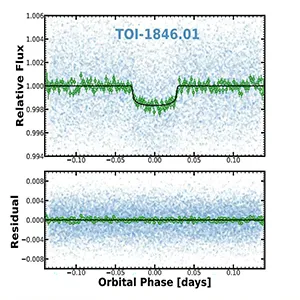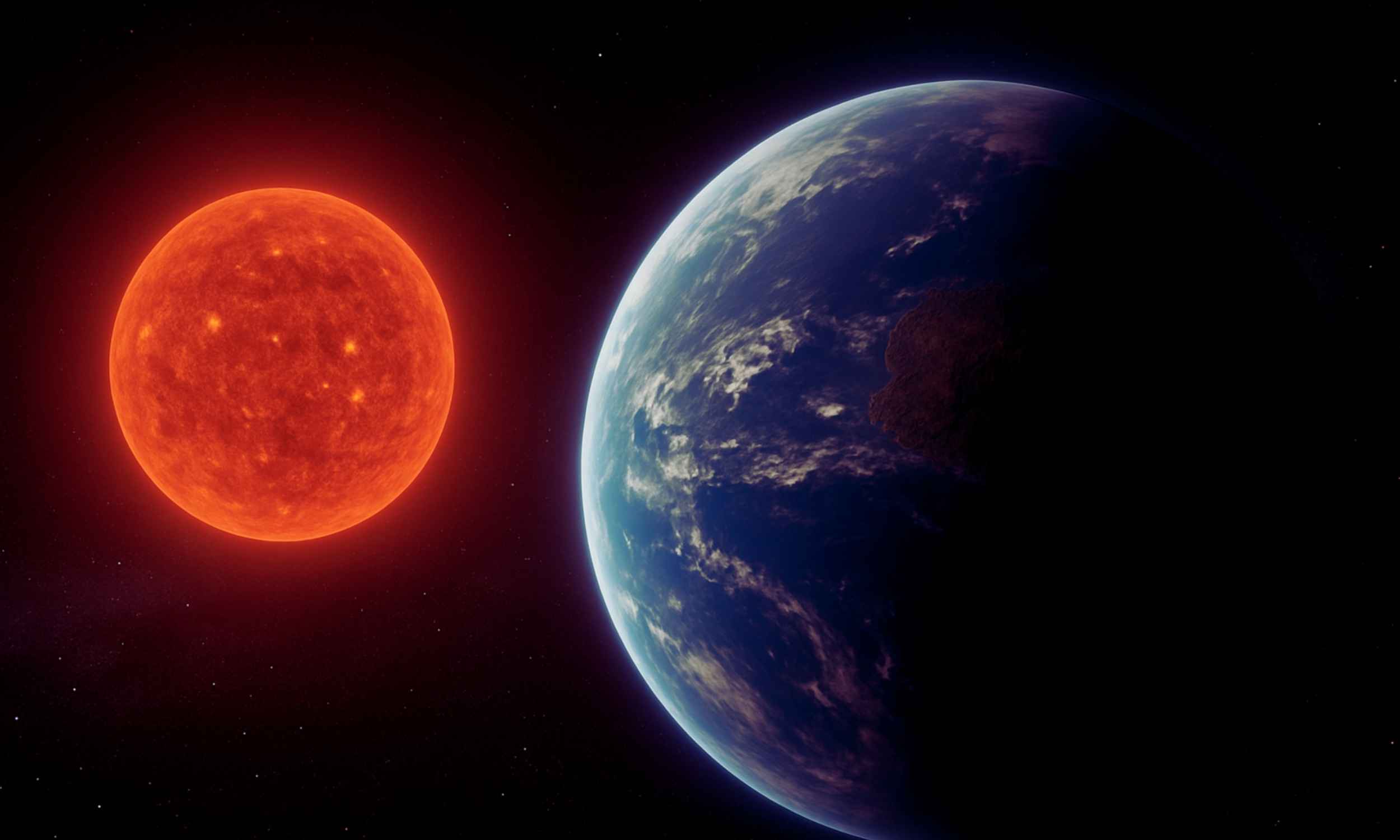A starlight flicker recorded by NASA’s Transiting Exoplanet Survey Satellite in March 2025 hinted at something intriguing. Now the signal has been traced to TOI‑1846 b, a super‑Earth lying only 154 light-years away in the northern constellation Lyra.
The planet’s discovery comes from Abderahmane Soubkiou and colleagues at the Oukaimeden Observatory in Morocco, working with observers on four continents.
NASA confirmed the discovery after the team combined TESS data with telescope images, light measurements from the ground, and older star photos.
How TESS watches TOI‑1846 b
Launched on April 18, 2018, TESS scans one giant stripe of sky after another, measuring the minute dimming that marks a planet crossing its star’s face.
More than 7,600 such dips have been tagged as “TESS Objects of Interest,” and over 630 have been checked off as bona fide worlds so far.
TESS favors small cool suns, and TOI‑1846 (the sun near TOI‑1846 b) fits that bill. The Red Dwarf is about 40 percent the Sun’s size and mass and glows a warm 6,000 F, making its habitable zone far closer in.
Because the star is faint, each transit of TOI‑1846 b subtracts only a few hundredths of a percent of its light. Yet TESS’s four wide‑field cameras and 30‑minute cadence keep such shallow events from slipping past.
Sizing up a watery world
More detailed observations suggest the planet is almost twice as wide as Earth and about four times heavier. That size and weight combination gives it a density lighter than solid rock but heavier than planets with thick, gassy envelopes.
Based on this, scientists think the planet may have a layer of dense ice underneath, topped by a thin atmosphere or maybe even a shallow ocean.
If that’s true, water could exist in some form even with the estimated surface temperature around 600°F, thanks to the planet likely always showing one side to its star.
“We have validated TOI‑1846 b using TESS and multicolor ground‑based photometric data, high‑resolution imaging, and spectroscopic observations,” wrote Soubkiou at the end of the team’s announcement.
Their measurements also show the planet circles its star in just under four days, staying much closer to its sun than Mercury does to ours.
Why the radius gap matters
Exoplanet surveys reveal a puzzling lull at roughly 1.8 Earth radii, the so‑called radius valley, separating rocky super‑Earths from gassy sub‑Neptunes.
Planets sitting on the valley’s floor help astronomers decide whether photo‑evaporation, core‑powered mass loss, or formation history digs the gap.
Because TOI‑1846 is relatively bright in infrared, its planet offers a pristine test case. Any hydrogen envelope should be thin enough for infrared spectrographs to peek through and probe heavier molecules such as water vapor or carbon dioxide.

TESS statistics still leave the radius valley poorly sampled around M dwarf stars. Pinning down the exact cutoff in these cooler systems could explain why some worlds shed their primordial gas while others stay puffy.
Why red dwarfs are important
Red dwarfs make up about 75% of the stars in our galaxy, and many of them lie close to Earth.
Because they are smaller and cooler than the Sun, it is easier to detect small planets around them using the transit method.
Their low brightness also means that planets in the habitable zone orbit very close in, making transits more frequent and easier to spot.
This gives astronomers more chances to gather data and confirm whether these worlds could hold onto atmospheres or even surface water.
What comes next
“These findings make TOI‑1846 b well‑suited for mass determination via RV observations,” the team noted, pointing to the MAROON‑X instrument on Gemini North in Hawaiʻi. By clocking the star’s wobble at yard‑per‑second precision, MAROON‑X can verify the planet’s mass and sniff out hidden siblings.
Transit timing campaigns will keep watching for additional planets that tug on TOI‑1846b as it circles. A second world farther out could protect a gentler, milder zone where liquid water survives without pressure cookers.
Looking for life on TOI‑1846 b
Even sizzling planets can teach researchers how atmospheres evolve around small stars.
If the upcoming JWST Cycle 4 wins time for TOI‑1846 b, its mid‑infrared spectrometers could detect steam, methane, or sulfur dioxide in just a handful of eclipses.
Life is unlikely under those temperatures, yet understanding how oceans persist on the hot edge guides the broader search.
Every new planet confirmed using the transit method adds another valuable piece to the puzzle. Each of these targets helps improve our chances of finding milder, Earth-like worlds orbiting the thousands of red dwarfs scattered within 100 light-years of our solar system.
The study is published in arXiv.
—–
Like what you read? Subscribe to our newsletter for engaging articles, exclusive content, and the latest updates.
Check us out on EarthSnap, a free app brought to you by Eric Ralls and Earth.com.
—–
